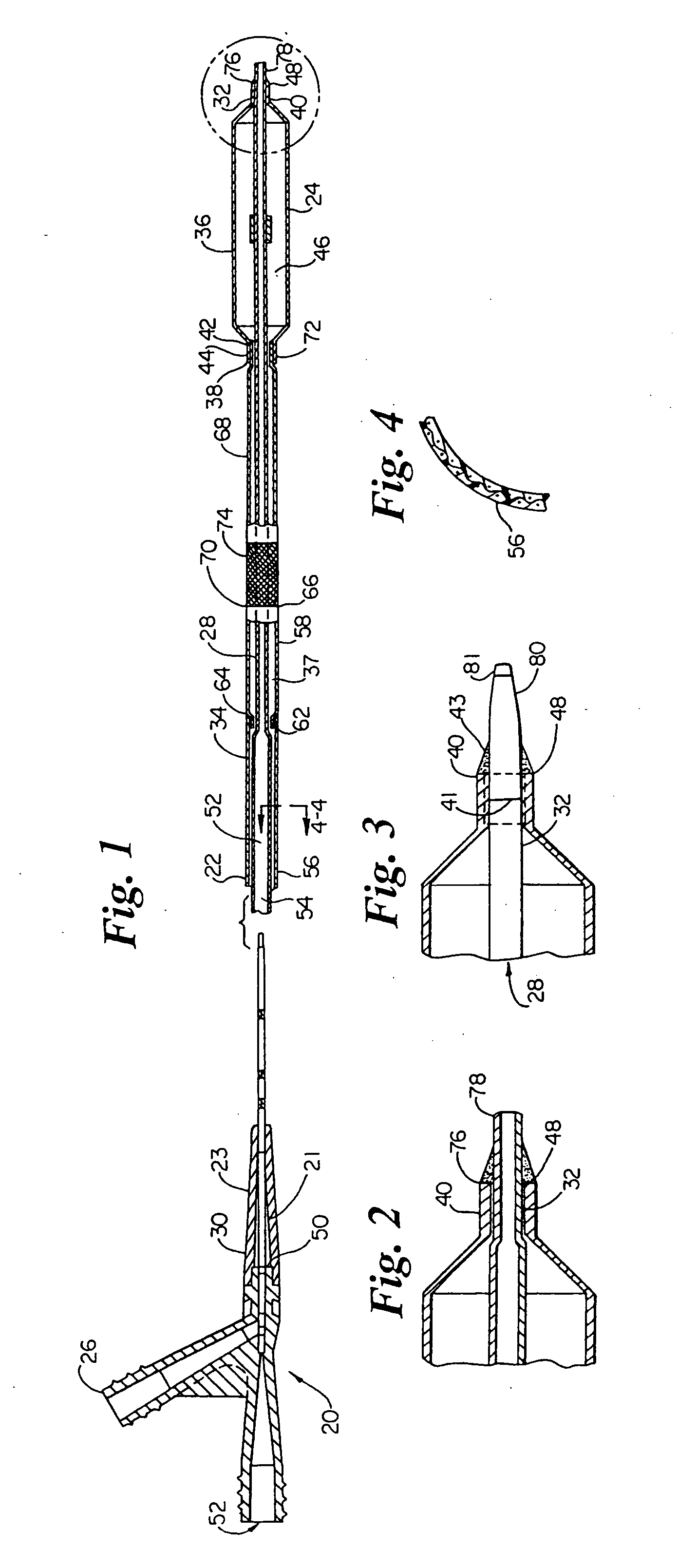Catheter with spiral cut transition member
a technology of transition member and catheter, which is applied in the direction of stents, dilators, surgery, etc., can solve the problems of kinking at the joint, affecting the flexibility of the transition, and the hypertubing is often prone to kinking
- Summary
- Abstract
- Description
- Claims
- Application Information
AI Technical Summary
Benefits of technology
Problems solved by technology
Method used
Image
Examples
Embodiment Construction
[0025] The following detailed description should be read with reference to the drawings in which like elements in different drawings are numbered identically. The drawings, which are not necessarily to scale, depict selected embodiments and are not intended to limit the scope of the invention.
[0026] Examples of constructions, materials, dimensions and manufacturing processes are provided for selected elements. All other elements employ that which is known to those skilled in the field of the invention. Those skilled in the art will recognize that many of the examples provided have suitable alternatives which may also be utilized.
[0027] Referring now to the drawings, FIG. 1 is a cross-sectional view of an over-the-wire balloon catheter showing a preferred embodiment of the present invention. The balloon catheter 20 includes a shaft assembly 22 and a balloon assembly 24 connected proximate its distal end. A conventional OTW-type manifold assembly 26 is connected to the proximal end ...
PUM
 Login to View More
Login to View More Abstract
Description
Claims
Application Information
 Login to View More
Login to View More - R&D
- Intellectual Property
- Life Sciences
- Materials
- Tech Scout
- Unparalleled Data Quality
- Higher Quality Content
- 60% Fewer Hallucinations
Browse by: Latest US Patents, China's latest patents, Technical Efficacy Thesaurus, Application Domain, Technology Topic, Popular Technical Reports.
© 2025 PatSnap. All rights reserved.Legal|Privacy policy|Modern Slavery Act Transparency Statement|Sitemap|About US| Contact US: help@patsnap.com



